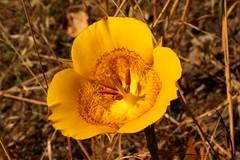“Unlike raisin or fresh grape production, where greater cluster size and quantity were preferred, wine grapes often produced superior vintages on rocky, sandy (e.g., Virg. Georg. 2.346; Colum. Arbor3.6), or even infertile soils, which tended to check productivity and overall vine vigor. Harvested yields were low there, but proper sugar and acidity levels (depending on the type of wine desired) were more easily obtainable.”
The quote above is from Victor Davis Hanson, a military historian and former professor of Classics at California State University, Fresno. He is a fifth generation California grape farmer from the Central Valley who lives in a farmhouse that was originally built in the 1870s by his great-great-grandmother. He is discussing “the ways of farmers” 2,500 years ago in ancient Greece. With the rise of the independent yeoman farmer, the georgos, the agrarian roots of Western civilization and consensual government were sunk. And it began with the intensive farming of less than desirable land at the fringes of more bountiful valleys and plains.
Whenever I’m on Highway 33 in Santa Barbara County along the upper Cuyama River, and drive through the hamlet of Ventucopa, the vineyard shown above always catches my eye. Especially when it’s flush with shiny green leaves like in this summertime photo. I appreciate the aesthetics. The striking contrast of well-tended plants and precise design set against the rugged and stark Cuyama badlands as a backdrop. But I see more than superficial beauty. The vineyard lies like art on the dry and barren terrain of the sparsely populated valley, an agricultural gem reflecting the agrarian legacy humanity.
Through my eyes I see vines thriving in the aridity and poor soil of an inhospitable environment, the masterwork of the inheritors of thousands of years of accumulated expertise. A collection of knowledge to which the present generations add their own bit of insight and know-how painstakingly earned through years of experience. The vineyard calls to mind farms in ancient Greece in the manner in which the lesser quality California farmland on the fringes of the exceptionally fertile San Joaquin Valley have been put to bountiful use.
Victor Davis Hanson, The Other Greeks: The Family Farm and the Agrarian Roots of Western Civilization (1999).






















Great photograph and enjoyed the writing about the area. I love the area also. Thank you for sharing.
Hey Max. Thanks for dropping by.
Cuyama Valley has been producing some great wines for quite a while now. Next time you’re in the Ventucopa area, call ahead for a reservation….
http://www.sagebrushannies.com/wines.html
Thanks, Dave. I appreciate that. I’m familiar with the establishment, but have never made reservations or stopped there. I had seen it many times as I’ve driven by, but only gave it a passing glance. I knew nothing about it until I sat down to write down my thoughts on the vineyard and then stumbled across their Website. Sounds like quite the little nook in more ways than one.
The Place, located just down the road from Sagebrush Annies is also a great spot to eat and drink local wines. I recall that a couple of years ago my 4 course ribeye steak dinner was less than $10! They also serve local wine there, but I’ve only been after trips to the Carizzo when a cold beer seemed more appropriate.
Thanks for sharing. I’ll have to make a point of stopping there one of these days and getting something to eat. I’ve only been in there once briefly for a cup of coffee.